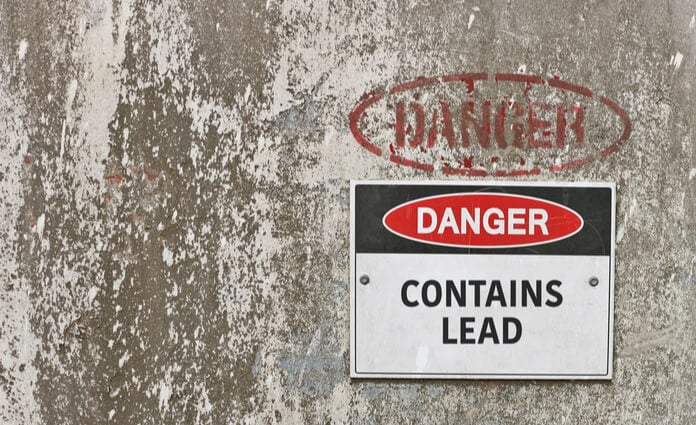Heavy metals testing in toys and safety requirements have become increasingly stringent in recent years, and with due cause:
29% of recalls in 2016/2017 were due to chemical hazards alone. The onus lies on manufacturers and importers to comply with safety standards, ensuring that toys are manufactured according to the latest specifications. In this post we look at the new updates for toy safety regulations, the tests to be performed to meet the new safety specifications, as well as the steps you should take to avoiding heavy metal migration in toys and preventing future quality issues. It’s little wonder then that the new limits for the
EN 71-3 standard as set out by the European Union (EU) will become mandatory as of 28 October 2018. Additionally, ASTM International published a direct final rule on 4 December 2017, approving
ASTM F963-17 as the obligatory standard.
The chemical composition of toys can pose an alarming threat to a child’s health. Toys can contain traces of heavy metals such as antimony, arsenic, bromine, cadmium, chromium, lead and mercury. These heavy metals can cause a
range of harmful effects, from respiratory disorders to neurodevelopmental issue, from cancer and even to death. As these effects are
untreatable, when it comes to heavy metal migration in toys, prevention is better than cure, which is what the safety specifications seek to ensure.
Why the need for safety regulations arose
Toy quality control plays a role in not only ensuring the health of consumers, but also in brand reputation. However, the use of the toxic metal, lead, in the manufacture of toys has not been banned. Lead is often found in chalk, crayons, modelling clay, paint and varnish plus it is widely used as a stabilising material in the manufacture of PVC.
Cost is one of the common reasons toys are manufactured with materials containing heavy metals. For example, lead-based paints are up to 30% cheaper than paint with lower lead levels. In the highly competitive toy manufacturing market, many factories will attempt to lower overheads and boost profits by using cheaper leaded paint on toys.
A
2015 study, which was performed by Nepal’s Society for Legal and Environmental Analysis and Development Research in conjunction with Ministry of Science Technology and Environment, analysed the heavy metal content of 100 toys. This research showed that 99% of the toy samples contained a higher level of chromium than the limit of multiple countries. Additionally, 26% of the samples contained lead contamination while 13% held traces of cadmium and every sample had more zinc than the limits allowed by ISO or the US.
In another
case study, published in the
Journal of Taibah University for Science in November 2017, 25 toys imported from China to Nigeria were sampled for potentially toxic materials. Ternary acid digestion and Atomic Absorption Spectrophotometry determined the potentially toxic metals in the sample. Alarmingly, the total concentrations of potentially toxic metals in the samples were 36.1-107mg/kg for lead, 3.55-40.7mg/kg for cadmium, 1.83-38.9mg/kg for chromium and 9.78-159mg/kg for copper.
In an unregulated market, it’s clear that heavy metal migration could run rife, with potentially disastrous consequences.
Updates to toy safety regulations

To minimise the possibility of heavy metal migration in toy manufacturing, the EU has tightened the regulations of toy quality control. Testing according to the revised EN71-3 standard includes 19 elements and the migration limits have been revised. The update has divided toys into three categories:
- Category 1: Dry, brittle, powder-like or pliable materials.
- Category 2: Liquid or sticky materials
- Category 3: Scraped-off materials
The limits for lead – which were previously set at 13,5mg/kg in dry material, 3,4mg/kg in liquid material and 160mg/kg in scraped off material – have been revised and the new limits are 2.0mg/kg, 0.5mg/kg and 23mg/kg respectively.
It is a requirement of the CPSC that toys manufactured after 30 April 2017 are tested according to the ASTM F963-17 standard, which covers eight heavy metals. Manufacturers and importers of children’s products must certify, in a written Children’s Product Certificate (CPC) based on test results from a CPSC-accepted laboratory, that their children’s products comply with applicable children’s product safety rules.
What tests must be performed to meet the safety specifications?
It’s vital that third-party laboratories are accredited to ensure compliance. Labs must be able to determine their measurement uncertainty and correctly interpret if this result complies with the migration limits of EN 71-3. To accurately measure heavy metal content, raw material chemical testing should be carried out:
- Raw Material Chemical Testing
Tests are carried out for the full range of common toxic chemicals and elements, including phthalates, lead, mercury, and cadmium.
Pre-testing raw materials before they’re crafted into toys avoids taking goods to market that are unsafe for use, and that can lead to costly redesigns or recalls.
API offers RSL (restricted substances list) screening services and toy testing to assure that your products comply with the latest REACH and EN 71-3 safety requirements.
Under the ASTM F963-17 regulations, laboratories must also test compliance for eight heavy metals including toy substrate metals. These include arsenic, barium, cadmium, chromium, lead, mercury, and selenium. The soluble limits for each (in parts per million) are as follows: arsenic: 60ppm, arsenic 25ppm, barium 1 000ppm, cadmium 75ppm, chromium 60ppm, lead 90ppm, mercury 60ppm, selenium 500ppm.
How to prevent heavy metals from entering your raw materials

Prevention is better than cure, particularly with toy safety control. Follow these steps to circumvent heavy metals entering your raw materials:
- Raw material quality control is vital to ensure compliance, as well as chemical testing. Ensure accountability in your supplier chain through regular testing of raw materials. API offers a Restricted Substances List (RSL) screening service. Through this screening service, we can quickly determine whether non-compliant products need to be re-tested. We also advise that our clients undertake a chemical test for the full range of toxic chemicals, including cadmium, lead, mercury and phthalates.
- You can successfully avoid putting your brand’s reputation at risk by using only high-quality materials, rather than sub-standard, cheaper alternatives.
- Source environmentally-friendly, non-toxic raw materials rather than those which contain lead and other heavy metals.
- Use an accredited, reliable third-party quality provider that is up-to-date in toy testing and safety regulations. Our Hong Kong laboratory is accredited by major accreditation bodies globally to perform laboratory testing for the American, Australasian and European markets.
- With API’s DUPRO/Inline inspection, we can assist you in achieving EN 71-3 compliance. For full assurance of toy quality control, a DUPRO inspection will monitor the production line when at least 25% of the order has been completed. The DUPRO tests whether irregularities from the Initial Production Check have been corrected.
If a test comes back positive, an evaluation of the formula of the material/varnish should be carried out in order to highlight ingredients that may have caused the failure. Such ingredients should be changed or the material/varnish should be replaced with a safe one.
How API can assist with Toy Safety compliance
At API, we offer our clients a host of
tailored solutions to enable you to meet your regulatory requirements. We are dedicated to staying abreast of the latest regulations and updates across international markets. From lab testing to certification to inspection, we ensure your factory is compliant with global safety and legal standards. We provide customised factory audits according to your needs and protocols as well as combined audits (technical and social as well as social and environmental.)
As one of the first foreign entities to offer accredited inspection services in China across all consumer product categories, our Hong Kong laboratory has EN 71-1, 2 and 3 accreditation, EN 62115 as well as ASTM F963-17 (physical and mechanical, flammability, chemical and electrical.) Contact us today for assistance with EN 71-3 and ASTM F963-17 compliance.
 To minimise the possibility of heavy metal migration in toy manufacturing, the EU has tightened the regulations of toy quality control. Testing according to the revised EN71-3 standard includes 19 elements and the migration limits have been revised. The update has divided toys into three categories:
To minimise the possibility of heavy metal migration in toy manufacturing, the EU has tightened the regulations of toy quality control. Testing according to the revised EN71-3 standard includes 19 elements and the migration limits have been revised. The update has divided toys into three categories:

